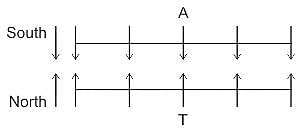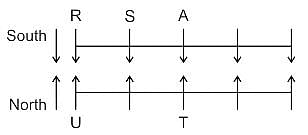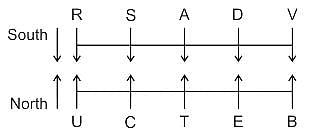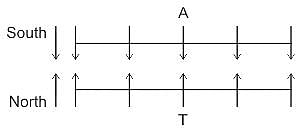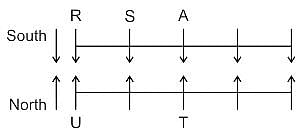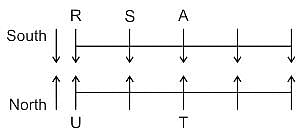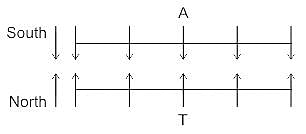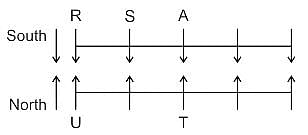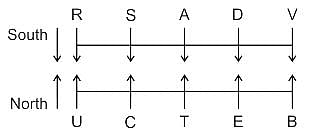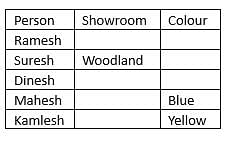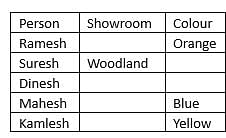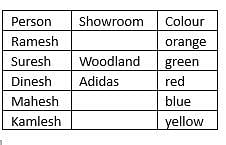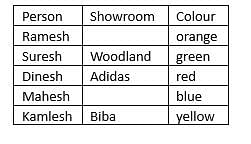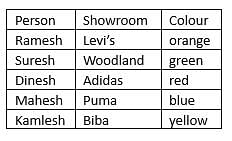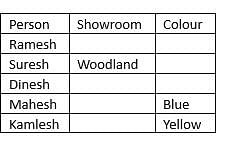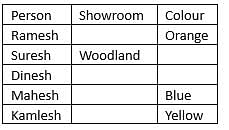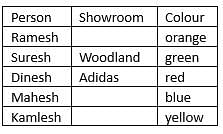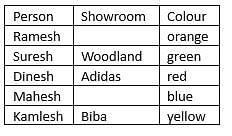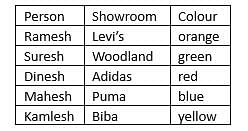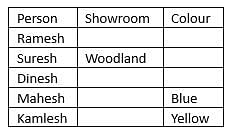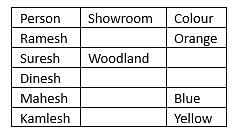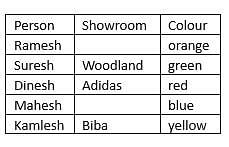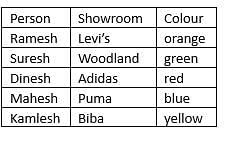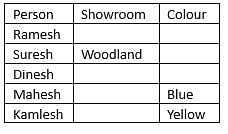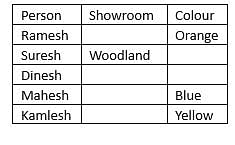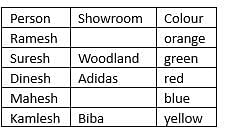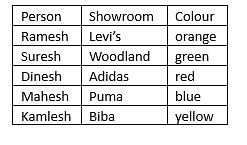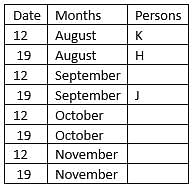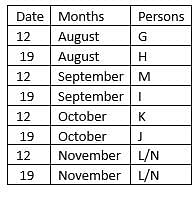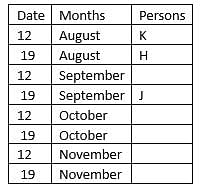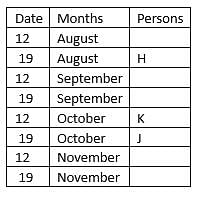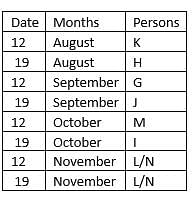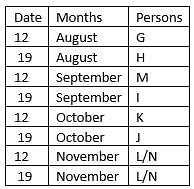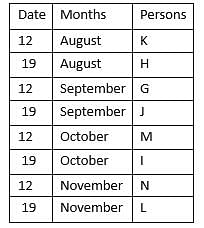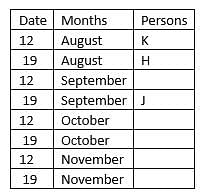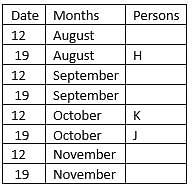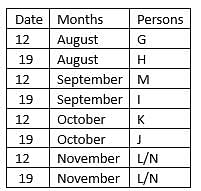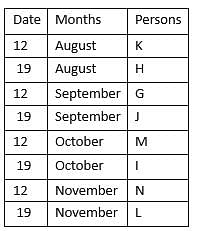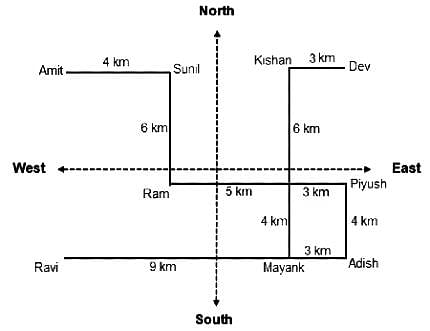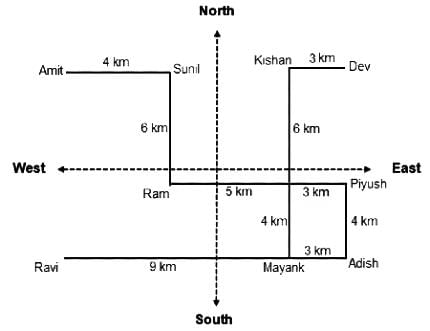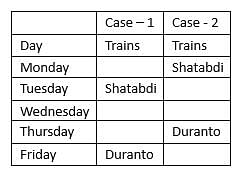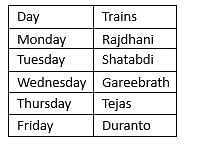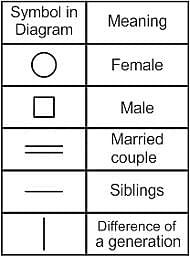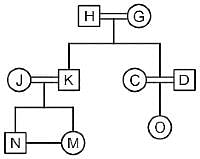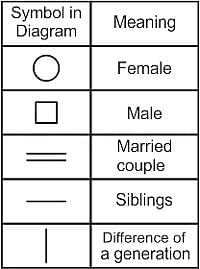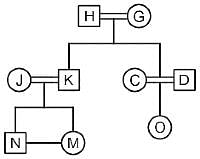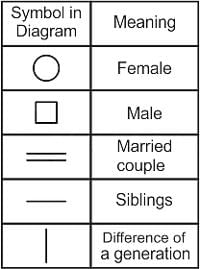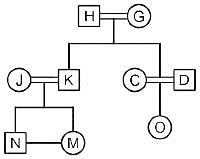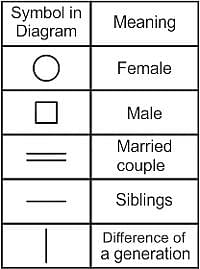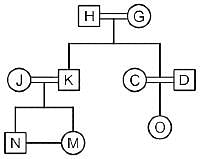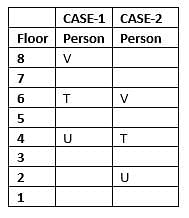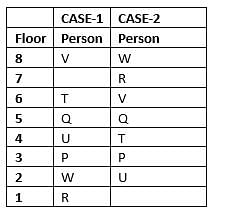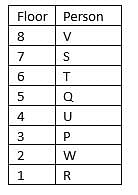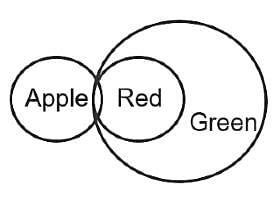Reasoning Ability Test - 4 - Bank Exams MCQ
30 Questions MCQ Test - Reasoning Ability Test - 4
Four of the five are alike in a certain way in the following arrangement and thus form a group. Which is the one that doesn’t belong to the group?
| 1 Crore+ students have signed up on EduRev. Have you? Download the App |
Directions: Study the following information carefully to answer the given questions:
Ten students A, B, C, D, E, R, S, T, U and V are seated in two parallel rows with five people each such that there is equal distance between the adjacent persons and each person in one row faces the person in the other row. In Row 1, A, D, R, S and V are seated facing South and in Row 2, B, C, E, T and U are seated facing North not necessarily in the same order.
A sits in the middle of the row. T sits opposite A. R sits opposite U. U is not an immediate neighbour of T. S sits to the immediate left of R. D who sits opposite E is an immediate neighbour of A. B does not sit opposite S.
Who sits third to the left of E?
Kamlesh went to which showroom and bought which coloured dress?
The one who bought green coloured dress went to which showroom?
Who among the following have Exam between 12th September and 19th October?
Four of the following five are alike in a certain way and thus form a group. Which among the following does not belong to the group?
What is the direction of the house of Amit with respect to Ravi’s house?
Directions: In the following question assuming the given statements to be true, find which of the conclusion(s) among given conclusions is/are definitely true and then give your answers accordingly.
Statement:
U = J ≥ R, W > R = Y
Conclusions:
I. Y < J
II. J = Y
Directions: In the following question assuming the given statements to be true, find which of the conclusion(s) among given conclusions is/are definitely true and then give your answers accordingly.
Statement:
S = U ≥ R ≥ T > H > D
Conclusions:
I. D < S
II. U > H
How many numbers are there in the above arrangement which immediately preceded by a symbol?
How many vowels are there in the above arrangement which are just before a number?
How many symbols are there in the above arrangement which are immediately followed by a number and immediately preceded by a consonant?
Five trains namely Rajdhani express, Duranto express, Shatabdi express, Tejas express and Gareebrath express are running from Delhi to Dehradoon in different days of the week, starting from Monday to Friday. Two trains are running between Shatabdi and Duranto. Shatabdi is going to Dehradoon before Wednesday. Tejas express is going to Dehraddon immediate after Gareebrath. Rajdhani is not running on Friday. Then who among the following train are going to Dehradoon on Wednesday?
If A is sitting in between T and M then who is sitting Fourth to the right of A?
Direction: In the following question assuming the given statements to be true, find which of the conclusion(s) among given conclusions is/are definitely true and then give your answers accordingly.
Statement:
S ≥ U ≥ V = N < G < I
Conclusions:
I. S > N
II. S = N
Four of five are similar in a certain way find the odd one out?
Directions: In the following question assuming the given statements to be true, find which of the conclusion among given conclusions is/are definitely true and then give your answers accordingly.
Statements:
S = T = R; T = W = U < G
Conclusions:
I. S < G
II. G > R
Directions: In each of the questions below are given two statements followed by two conclusions numbered I and II. You have to take the given statements to be true even if they seem to be at variance from commonly known facts. Read all the conclusions and then decide which of the given conclusions logically follows from the given statements disregarding commonly known facts.
Statements:
Only a few apples are red.
All red is green.
Conclusions:
I. Some Apple is not Red
II. Some Red is Green.


